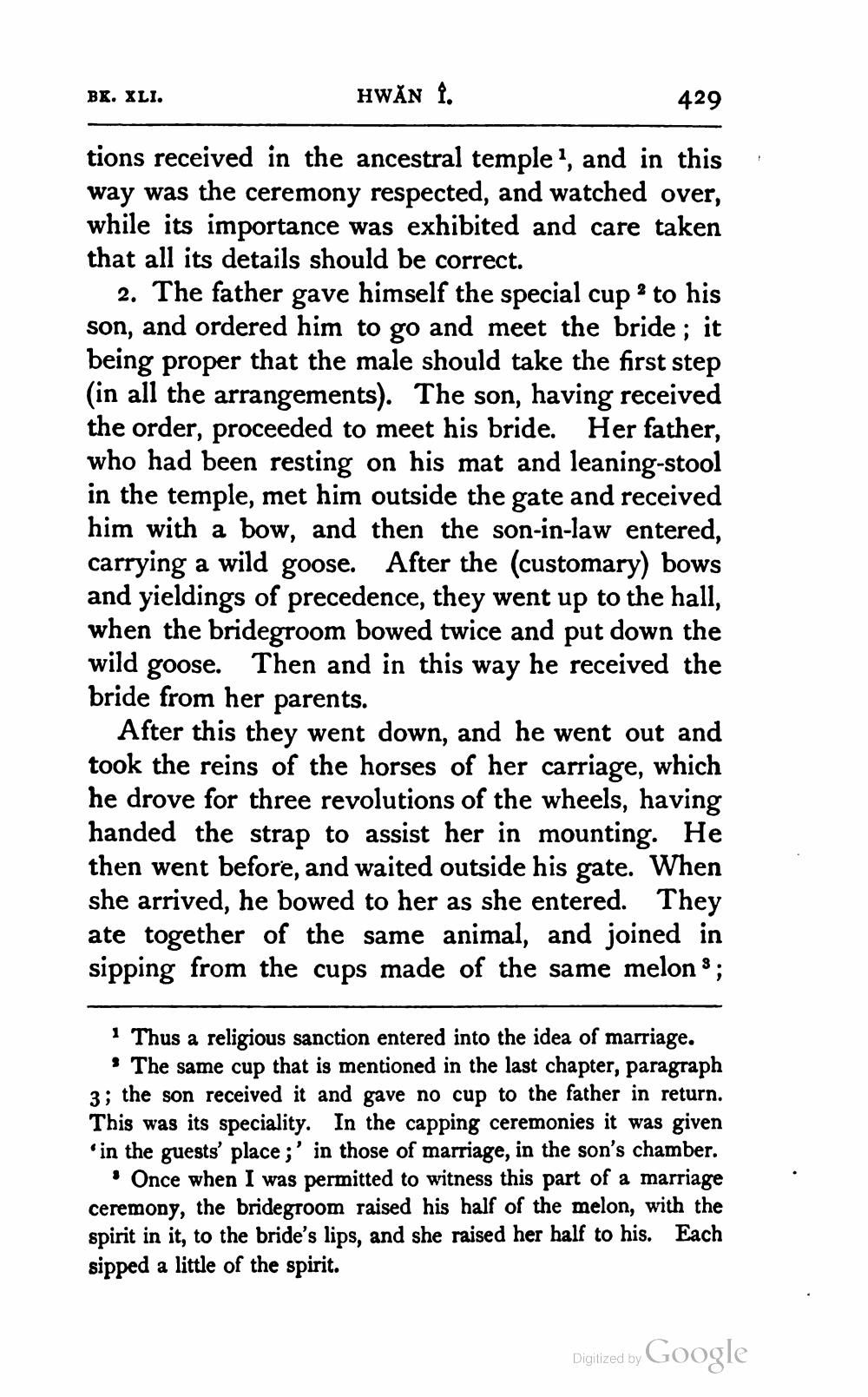________________
HWAN 1.
429
tions received in the ancestral temple1, and in this way was the ceremony respected, and watched over, while its importance was exhibited and care taken that all its details should be correct.
BK. XLI.
2. The father gave himself the special cup to his son, and ordered him to go and meet the bride; it being proper that the male should take the first step (in all the arrangements). The son, having received the order, proceeded to meet his bride. Her father, who had been resting on his mat and leaning-stool in the temple, met him outside the gate and received him with a bow, and then the son-in-law entered, carrying a wild goose. After the (customary) bows and yieldings of precedence, they went up to the hall, when the bridegroom bowed twice and put down the wild goose. Then and in this way he received the bride from her parents.
After this they went down, and he went out and took the reins of the horses of her carriage, which he drove for three revolutions of the wheels, having handed the strap to assist her in mounting. He then went before, and waited outside his gate. When she arrived, he bowed to her as she entered. They ate together of the same animal, and joined in sipping from the cups made of the same melon 3;
1 Thus a religious sanction entered into the idea of marriage.
The same cup that is mentioned in the last chapter, paragraph 3; the son received it and gave no cup to the father in return. This was its speciality. In the capping ceremonies it was given ' in the guests' place;' in those of marriage, in the son's chamber.
• Once when I was permitted to witness this part of a marriage ceremony, the bridegroom raised his half of the melon, with the spirit in it, to the bride's lips, and she raised her half to his. Each sipped a little of the spirit.
Digitized by
Google




